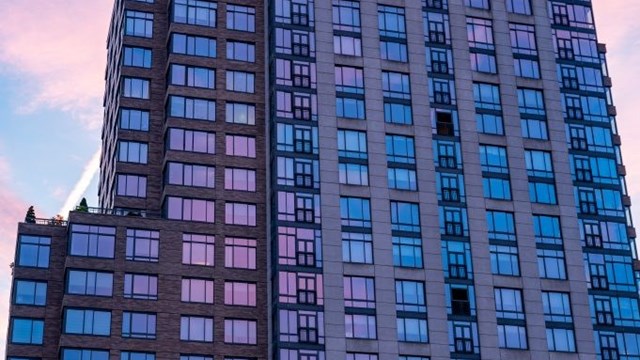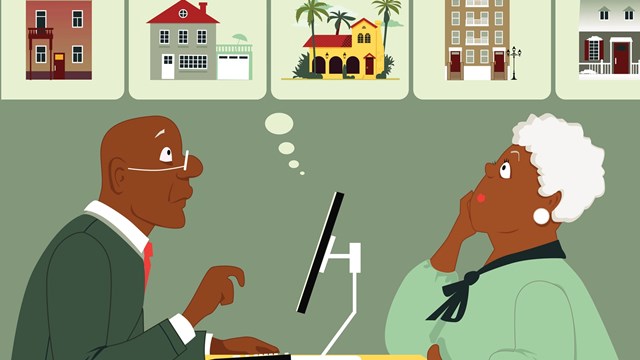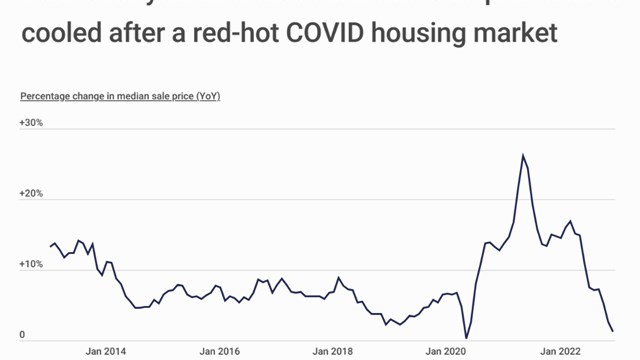
New York City takes understandable pride in the many beautiful parks studding the concrete rigidity of its urban grid. This makes it somewhat ironic that one of the lovliest of these green spaces is locked up—accessible only to those lucky enough to live in a building facing onto it. Gramercy is the name both of the park itself and the neighborhood immediately surrounding it, and its beauty and exclusivity have delighted and frustrated New Yorkers for over a century.
From Swamp to Swank
Today, the neighborhood of Gramercy lies between East 20th and 21st Streets (called Gramercy Park South and North at the park, respectively), and Gramercy Park West and East, two mid-block streets between Park Avenue South and Third Avenue. The park itself also marks the termination of Lexington Avenue on its north side, and the origin of Irving Place on its south side.
Back in 1831 however, what is now Gramercy Park and the surrounding tree-lined neighborhood was a marshy swamp. Samuel B. Ruggles bought the property—then called "Grammercy Farm" in 1831 from James Duane, a descendant of Peter Stuyvesant. Ruggles spent a fortune draining the swamp, and according to historians, moved about a million horsecart-loads of earth during the course of the project. He then laid out "Gramercy Square," and deeded possession of the square to the owners of the 60 parcels of land he had plotted to surround it, making Gramercy Park held in common as a privately-owned park. Ruggles sought and was granted tax-exempt status for the park in 1832, and also compelled the state legislature to establish Lexington Avenue and Irving Place to feed his development at the top and bottom of the park. The iron fence enclosing Gramercy Park was erected in 1832, but construction on the surrounding lots did not begin in earnest until the 1840s.
Much of that development came in the form of single-family mansions and row houses, but in the 1870s, Richard Morris designed the Stuyvesant Apartments, which—though now demolished—were considered to be the first real "apartment building" in the city. Of course there was tenement housing before that, but Morris' building catered to the middle- and upper-class New York family, and in doing so gave apartment living a level of social desirability that it had historically lacked.
Other buildings capitalized on Stuyvesant's idea, and 129 East 17th Street was built in 1878. This building is now thought to be the oldest apartment building in New York City, while the nearby Gramercy (at 34 Gramercy Park East) is the oldest co-op in the city. These buildings were large for their day —big enough to house 20 or 30 families within their walls. Row houses and townhouses continued to go up during this time, as did other types of apartment buildings—including at least one built exclusively for bachelors—its designers purposely omitted kitchens in all units.
Changing Charm
During the late 1800s until the turn of the last century, progressive reformers spilled into Gramercy and turned it into a hotbed of artistic activity and charity work. In the span of only a few short years, the number of schools, parks, baths, courts and civic structures around Gramercy Park boomed. In 1892 and 1893 alone, the United Charities, the Association for the Prevention of Cruelty to Children and the Church Missions House all became residents of the neighborhood. The area was desirable for these organizations for many reasons, but mostly due to the fact that while Gramercy had always been seen as a "respectable" address and was located close to mass transit lines, it was always somewhat less expensive than the fashionable neighborhoods farther uptown.
In addition to charity, the neighborhood attracted celebrity as well; The School of Visual Arts at 17 Gramercy Park now occupies the former home of Joseph Pulitzer; future president John F. Kennedy lived in the Gramercy Park Hotel for years with his parents, and John Steinbeck lived briefly at Tudor-style No. 38. Albert Schweitzer was a frequent guest at the hotel, and novelist O. Henry was often seen in the bars around the park—particularly Pete's Tavern, which to this day proudly proclaims itself "The Bar O. Henry Made Famous." The National Arts Club (which relocated to Gramercy Park in 1906) boasted Teddy Roosevelt and art collector Henry Frick as members.
Another famous Gramercy club—the Players Club—was begun by Edwin Booth in 1888. Aside from gaining notoriety for being the brother of Abraham Lincoln's assassin, Edwin Booth was also a successful actor in his day and felt that there should be place for him and his perpetually under-appreciated group of friends to socialize and hold events. Today—after finally abolishing its no-women-allowed policy in 1989—the Players remains a posh, exclusive get-together spot for the New York theatre in-crowd. Members have included Frank Sinatra, Irving Berlin, and the Barrymore family. And Booth himself is immortalized in sculptural form at the center of Gramercy Park itself.
Gramercy's Golden Touch
By the 1920s, many of the affluent families that had called Gramercy home moved uptown to the more fashionable Upper East Side, and many of the grand homes they left behind were converted from single-family residences to apartment buildings. Facades were overhauled, some buildings (like the Stuyvesant Apartments) were torn down and replaced with new residences—or even factories, as was the case with several of the buildings on what is now Park Avenue South.
The exodus didn't last long, however —unlike many of the city's neighborhoods, which have borne witness to dramatic ebbs and surges of fortune over the decades, Gramercy has remained relatively stable and desirable. The historical and cultural value of the park and surrounding blocks was signed into law on September 20, 1966 when the neighborhood was designated an historic district by the Landmarks Preservation Commission. The district was listed on the National Register of Historic Places in 1980.
Today, people flock to Gramercy for the same reasons they always have: between the park, the privacy, the quiet, and now, with the economy being what it is, the relatively stable property values, Gramercy is one of the most desirable neighborhoods in Manhattan. According to Tamir Shemesh, managing director of Prudential Douglas Elliman and a Gramercy-dweller himself for many years, even in a slumping market, properties of any size in the neighborhood are always in demand.
“The market obviously has the same trends as other segments of the market,” says Shemesh, “which means from 2004 to 2007, it experienced tremendous growth. From 2007 up until half a year ago, obviously the neighborhood market went down like everywhere else, but not as much because it's such a prime location. Now the market is very strong here.”
Co-ops are priced at around $700 to $750 per square-foot and up, and then you have the prewa—maybe even on the Park—that can even go over a $1,000 per square-foot for a one-bedroom co-op. If it's a 700-square-foot unit, it should sell about for $600,000 to $650,000 on average. For condos, you're looking probably on average about $1,000 per square-foot and up. Obviously the larger the apartment, the higher the price point.”
Gloria Johnson, senior vice president of Stribling & Associates' Chelsea office, has lived in Gramercy since 1975 and has been dubbed "the Guru of Gramercy" by New York magazine. According to Johnson, people who come to the neighborhood generally stay there—and she is a prime example of this.
Part of residents' reluctance to go anywhere else—aside from the simple fact that they love their neighborhood—is that property values start high and tend to stay high in Gramercy, even as the recession has deepened.“When you are in an established neighborhood, in an established location, it’s always good,” says Shemesh. “You’re pretty stable in terms of growth and in terms of when it’s going down. Obviously, we’ve been going up and down, depending on the market, but the gap is not that big. The market is actually doing very well in the last two, two-and-a-half quarters.”
According to Johnson, what you get for your money in the neighborhood can vary. "At One Lexington, [apartments] average about 3,000 square feet,” she says, “and at 45 Gramercy Park, they're about 2,300 square feet, but at Number 34, they're only about 500 square feet. Sometimes buyers get two and combine them." (A quick bit of Gramercy trivia: According to Johnson, the largest private home in the city is located at Number 10 Gramercy Par—the old Salzburg House.)
The neighborhood has even welcomed a few new developments and residential conversions in recent years, Shemesh continues. “You have 240 and 260 Park Avenue South, 254 Park Avenue South, you have 1 Madison Park. I’m working on 19th between 1st and 2nd. We also have 233 17th Street, a condo development called Landmark 17. It's a beautiful 1870 building that is [being] converted into a condominium.”
Cultivating Community
And what of Gramercy Park itself? The gorgeous green space is really the centerpiece of a vibrant, tight-knit neighborhood of people who actually act like neighbors, says Arlene Harrison, president of the Gramercy Park Block Association and a trustee of the park. Harrison takes care to point out that the Gramercy Park Block Association is an entirely separate entity from the the park trustees, and the fact that she is active in both groups is unusual. "I'm the only one who wears two hats," she says. "The trustees only deal with inside the park, the block association only deals with outside the park."
And outside the park, "We are a very close-knit community," says Harrison. "We work on everything together. I get out emails every single week, and if a big issue comes up, I get them out a couple of times a day. So we stay in close contact—we're very loyal with each other. We're involved in a lot of community service. We believe in taking care not only of our neighborhood, but our neighbors. We do a lot of taking care of people. That's what holds us together."
Currently, Harrison says that the block association "is in the process of doing 41 tree gardens that surround the park. We're replacing three layers of cobblestones that used to be there but no longer. We have a great relationship with our police and community board as well."
The park is a focal point for several annual community events, Harrison continues. "We have Christmas Eve caroling every single year where we open the park to the public," she says. "People come from all over the city, rain or shine. We had over a thousand people come in 2009. We actually have seven events throughout the year in the park. We have Easter Sunday and a Palm Sunday procession coming up. We do a big Halloween, we do Edwin Booth's birthday on November 13th, and during Yom Kippur, the Brotherhood Synagogue comes in with their congregation for two services. A lot of the congregation comes from out of town and far away to come into the park on Yom Kippur."
Broad Appeal
In the end, whether Gramercy appeals to an individual apartment seeker "depends on whether you're an uptown person or a downtown person," says Johnson. "Gramercy is still considered Downtown, and there's great transportation, great schools, and great convenience."
"It's a prestigious address, it's true," adds Shemesh. "But what's more, is the privacy, and proximity to other neighborhoods. I dine and go out there, and spend time in the East Village and in Soho. When it's time to go home, I can walk there in minutes and I have a quiet, private place of my own. The neighborhoods change dramatically around here, but Gramercy is a quiet place away from the rest of the city."
Hannah Fons is associate editor of The Cooperator. Additional reporting and research for this article by Mary Fons-Misetic and David Chiu.






Comments
Leave a Comment